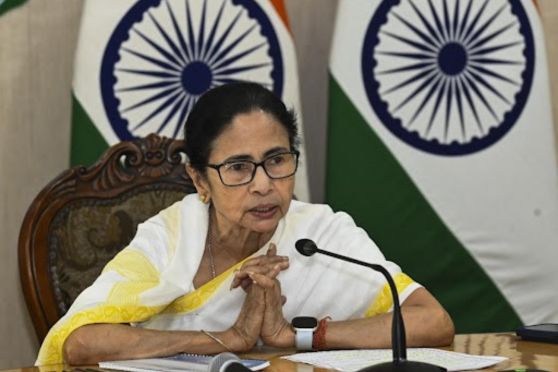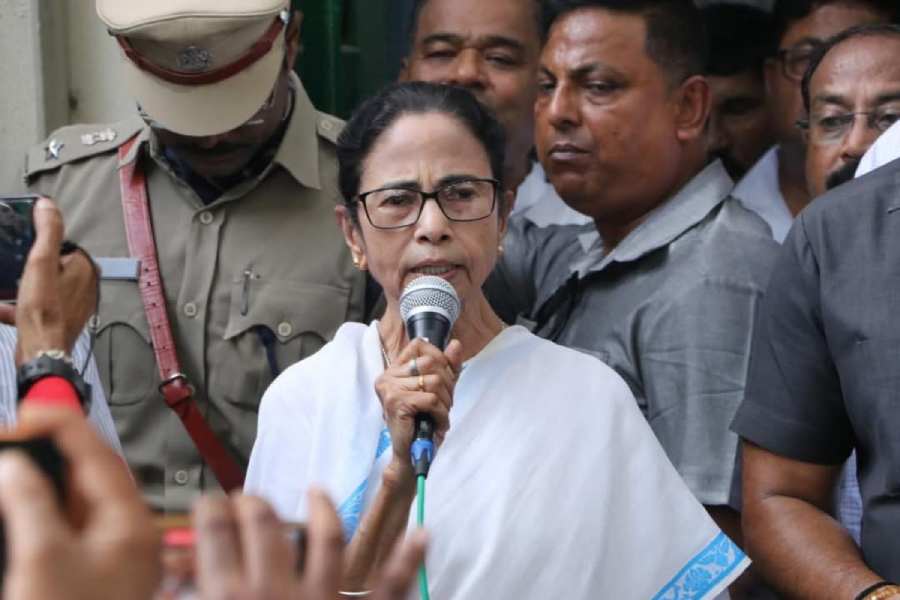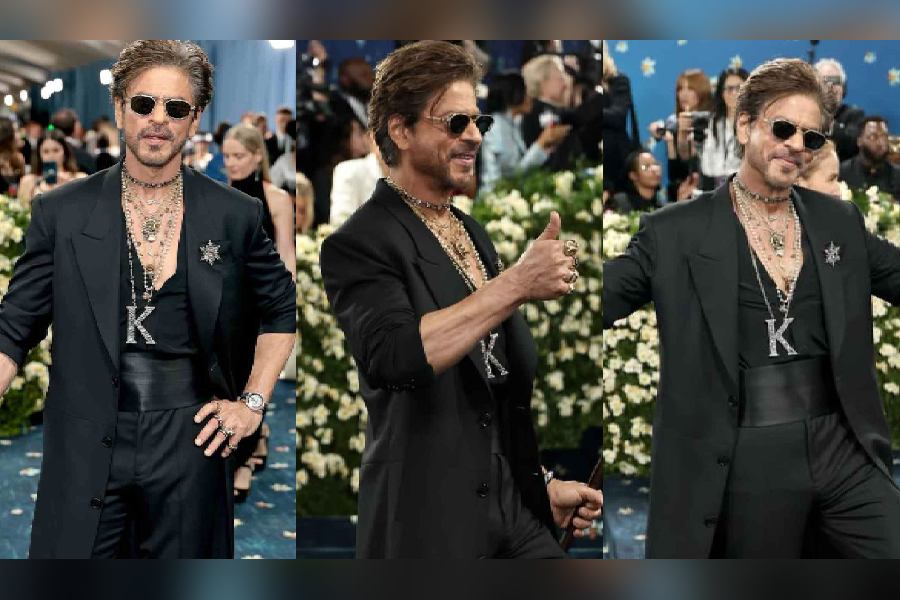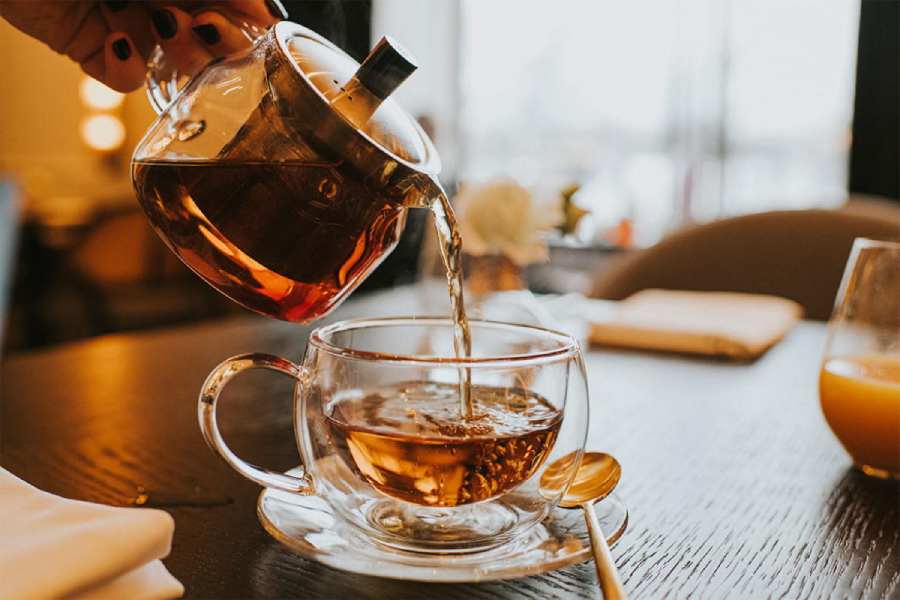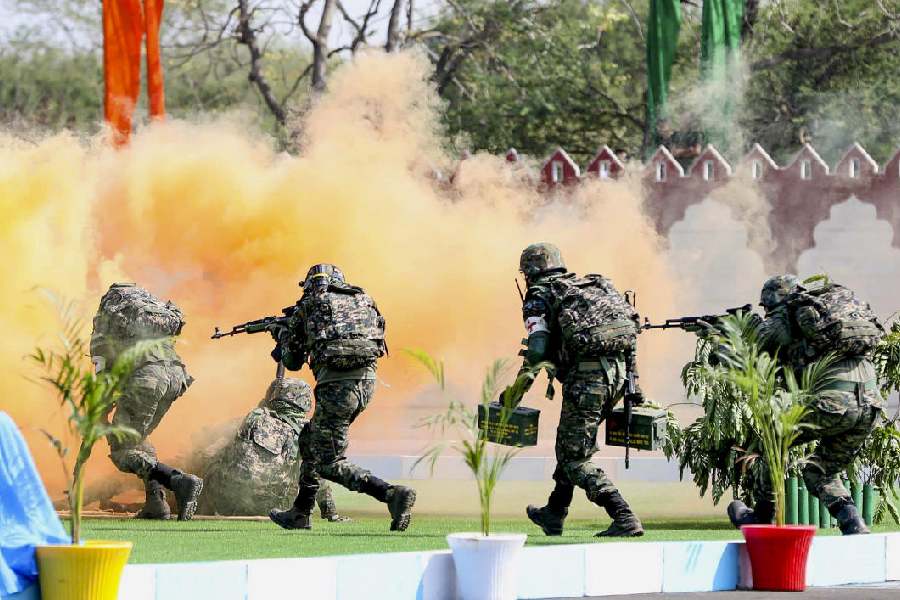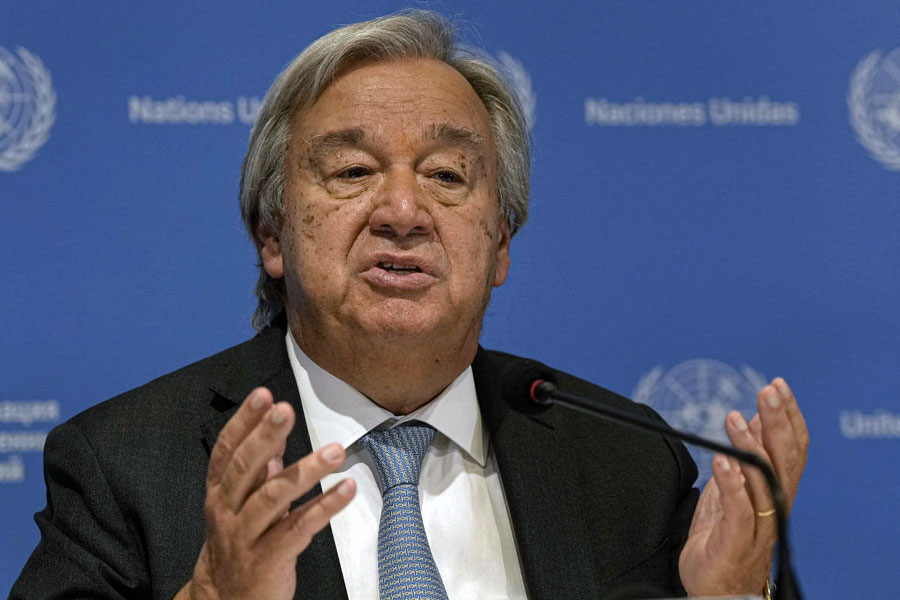 |
| The memorial marble arch with an equestrian statue of King Edward VII. Picture by Anindya Shankar Ray |
Couples dotted every stretch of the green landscape — chatting, holding hands, strolling, canoodling, or simply sitting in silence. Love was in the air. Victoria Memorial Hall should be renamed “Garden of Eden”, I thought as I made my way across the pretty lawns of our city’s biggest landmark.
It’s obvious why — the premises sprawl across 64 acres, with manicured lawns, carefully tended flowerbeds, idyllic walkways, gleaming water bodies and wooded patches. The white monument glowed against a perfect azure sky, the lush greens making the moment almost ethereal.
But if one can peer through the couples, the memorial and its features leave the viewer awe-struck. Facing the lion-guarded gates, a bronze statue of Queen Victoria (1837-1901) sits atop a high throne in billowing royal robes. Behind the statue are the Lion of Britain and the Tiger of Bengal, with the sun that was never supposed to set on the British Empire blazing above them.
When Lord Curzon had conceived of the monument as an ode to the Queen, one of his motives was to arrest “the rising tide of national feeling”. In less than 50 years of King George V laying the foundation stone in 1906, the memorial became a relic of the Raj itself.
Standing at the base of the steps of the monument, the enormity of the building took my breath away. That’s why the memorial took so long to build — it was opened on December 28, 1921, by King Edward VIII. As the white chequered marble glistened in the sun, I felt like royalty walking under the huge arch adorned with Italian figurines.
Well, some young couples were inside the building too, exploring the interiors. The treasures housed inside are worthy of their grand repository. The collection includes paintings, sculptures, statues, weapons, manuscripts, documents, books, maps, stamps and personal memorabilia of the colonial and earlier times. The list is too voluminous to reproduce.
Fact File ● Designed by Sir William Emerson and constructed by M/s Martin & Co. of Calcutta, the memorial was funded by contribution from Indian people and princes. According to one estimate, the bill was over Rs 1 crore five lakh. ● For the building, which measures 338ft by 228ft and rises to 184ft, Emerson chose the Italian Renaissance style with a touch of Indo-Saracenic. ● The marble was quarried at Makrana in Jodhpur, the same place that supplied the stone for the Taj Mahal. |
Queen’s Hall particularly fascinated me. In the middle of the huge circular room stands a life-size statue of the young Victoria. It’s hard to imagine this shapely lady as the mature matron of generous proportions. Even Her Majesty lost the battle of the bulge.
Circling the hall are 16 fluted marble columns, holding up a grand gallery, above which are frescos by Frank Salisbury, depicting incidents of the Queen’s life. But one gets a crick in the neck from craning it too long. The authorities could consider placing a few settees for visitors to lie back and study the spectacular dome.
The paintings are a treat. The memorial is home to the world’s largest collection of the works of Thomas and William Daniell, the uncle-nephew duo who came to India in 1786 and captured the many moods of the country in paintings and engravings.
In Durbar Hall is a painting of Esplanade by William Hodges, done in 1785. I closed my eyes and thought of Esplanade today— the contrast was thrilling.
Next to it, Calcutta Gallery chronicles the development of the city from Job Charnok up to 1911, when the British shifted their capital to Delhi. I came to know that Harrison Road (now MG Road) was the first road in Calcutta to be lit by electricity. Or that the emblem of Calcutta Corporation till 1961 depicted two adjutant storks, as these birds were found aplenty on Calcutta’s garbage dumps. Many more nuggets from the city’s history make this gallery come alive.
The first floor balcony offers a splendid view of the rear lawns — a lifesize marble statue of Lord Curzon overlooks an emerald garden bound by ruby red hedges. Up ahead stands a marble arch surmounted by a statue of King Edward VII on horseback. It is a mystery to me why the arch doesn’t find much mention in the annals of Calcutta’s built history.
tourist tips ●Victoria Memorial is situated at the southern end of the Maidan. Phone: (033) 2223-1890/1891 Website: www. victoriamemorial-cal.org ● Entry fee for garden: Rs 4 ● Entry fee for museum: Rs 10 for Indians, Rs 150 forv foreign nationals ● Outside food not allowed. There is a canteen near the staff quarters ● Museum timings: 10am to 5pm (Monday closed). ● The Memorial organises son-et-lumiere shows. Check website for details. |
The National Leaders Gallery on the first floor, added after Independence, has a fascinating painting of Kali standing atop two Shivas, one moustachioed, the other clean-shaven.
Stepping outside, I walked around the memorial, marvelling at the curved colonnade and the figure of Victory on top of the dome, 16ft tall and weighing 3 tonnes. Old timers would recall how the rotating angel mirrored a dancer’s slow pirouette.
The souvenirs were disappointing. The painfully limited collection comprises coffee mugs, coasters, T-shirts, wall plates and papier maché baul figures. Most are of inferior quality and overpriced. Another problem is toilets — one has to walk halfway across the premises to use the restrooms. Also missing are name tags for the array of swords, spears, knives, guns and muskets in the various galleries.
Maybe a well-planned guided tour of what is arguably the brightest jewel in India’s colonial architecture could be contemplated?
What places in Calcutta would you like to revisit? Tell ttmetro@abpmail.com


